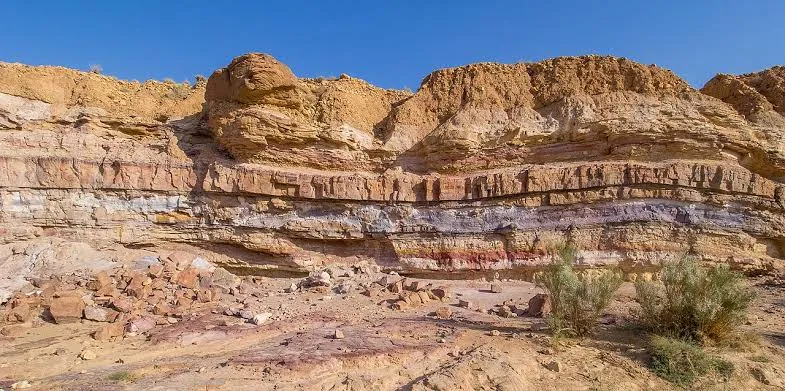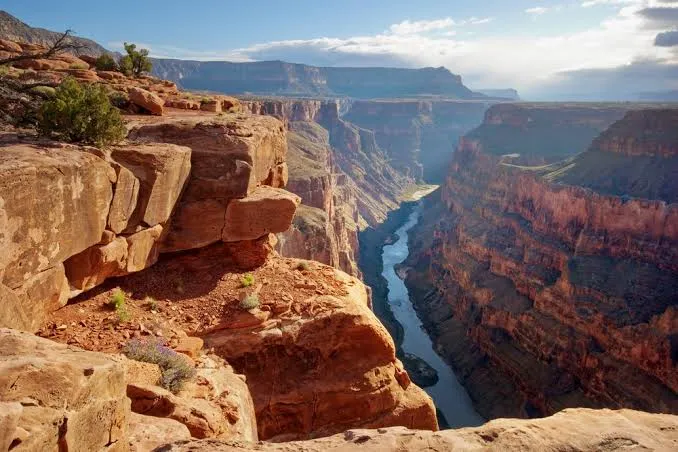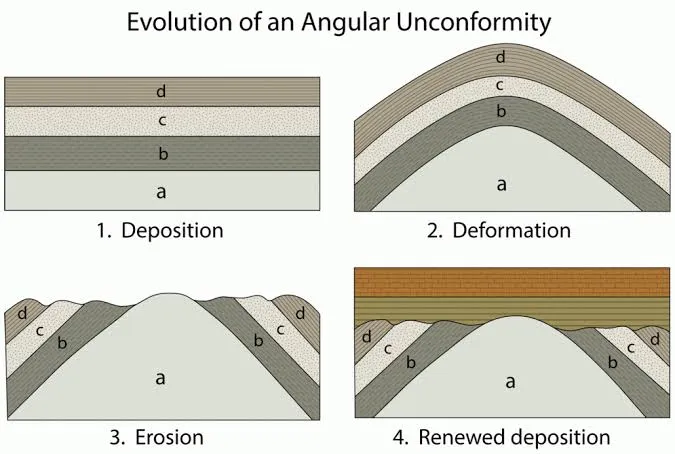Just like human beings go through different stages in life – from infancy to adult stage, the earth too has gone through many stages; each one begins with some important event or change. But the stages in the earth’s history took place in geologic time, each, stretched over enormous long periods of time. One would be wondering how scientists are able to find out about events that took place millions or even billions of years ago. The rock of the earth’s crust holds all the evidence. Scientists simply learned how to read the record of time preserved in the rocks. These methods are:
- Rock layering: Layers of sedimentary rocks provide scientists with important evidence of past events. As we know layers of sedimentary rock form one after the other, they are stacked according to age like a pile of old magazines. Older rocks are found under younger rocks. Therefore going down into deep layers of rocks is like going back in time. This principle hold true as long as the rock layers were not turned upside down by intense folding. Hence, the layering of sedimentary rocks help earth scientists to determine the relative age of these rocks.


- Unconformities: A break in the layering of rock can be informative. For instance, when a rock deposited in horizontal layers is folded or tilted, then eroded and when erosion stops a new horizontal layer is deposited on top of the tilted layer. An earth scientist knows that the tilted rocks are much older than the horizontal layers. The line between them, called an unconformity represents a break in time. Many different changes occurring over a long period produces an unconformity.

- Absolute age: Geologists have methods to determine the approximate age of rocks in years. These methods tell them the absolute age of rocks. The main method of determining absolute age is through radio metric dating. This same method is used to determine the age of a fossil through radioactive decay. One may ask how? Many rocks contain small amounts of radioactive isotopes when they first form and all organisms collect radioactive isotopes during their lives. After a rock forms or an organism dies, these isotopes start to decay at a regular rate and each radioactive atom turns into an atom of another element. Scientists measure the amount of radioactive isotopes present in the rock and compare it to the amount of the decay product present (decay product is an element formed from the released of some matter and energy from the nucleus of an atom of a radioactive isotope). The ratio of the two amounts is used to calculate the amount of time that has passed since the formation of the rock or the death of an organism.
On the next episode of this write-up we shall discuss the division of geologic time and life through geologic time. Stay tuned and please follow to get these updates and don’t forget to encourage me with your up-votes. THANKS!